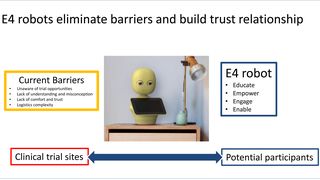Developing new materials of information on clinical trials could be a
potential obstacle. Government sponsored
clinicaltrials.govwebsite is the official and also for most of clinical trials the sole source
of information content. The information there is mostly academic. Our
solution calls for developing information in richer formats for lay
people, it would require trial sponsors and site researchers to invest
extra time and effort to go beyond
clinicaltrials.gov. Some trial sites
may not be ready to make this investment, we will then reach out to
many sites to find a right partner.
